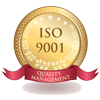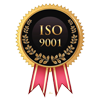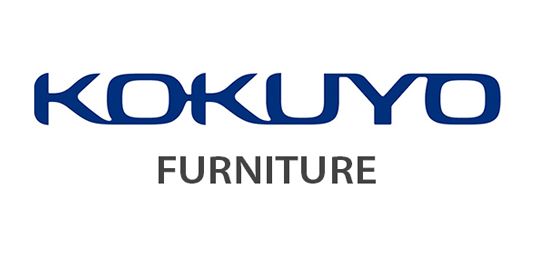Hereditary Genetic Testing Market: Global Size, Share, Trends, Growth and Forecast, 2022-2032
Hereditary Genetic Testing Market Overview and Definition
The hereditary genetic testing market refers to the segment of the healthcare industry that focuses on genetic testing for hereditary diseases and conditions. These tests are designed to identify changes or mutations in a person's DNA that can be passed down through families and increase the risk of certain diseases.
Hereditary genetic testing is used to diagnose a range of conditions, from single-gene disorders like cystic fibrosis and sickle cell anemia, to complex conditions like cancer, cardiovascular disease, and neurological disorders, where multiple genes may be involved.
The testing process typically involves collecting a sample of the patient's DNA, either through a blood sample, saliva sample, or tissue biopsy. This DNA is then analyzed in a laboratory to identify any mutations or changes that may be associated with a particular disease or condition.
Hereditary genetic testing can provide valuable information for patients and their families, allowing them to make informed decisions about their health and manage their risk for certain conditions. For example, if a person is found to have a genetic mutation that increases their risk of developing breast cancer, they may choose to undergo more frequent screening or consider preventative measures like a prophylactic mastectomy.
The hereditary genetic testing market is expected to continue to grow in the coming years, as advances in technology and increased awareness of the benefits of genetic testing lead to more widespread adoption of these tests.
Genetic testing represents the most rapidly expanding segment of molecular diagnostics in the healthcare industry. Genetic tests have shown great outcomes and proven vastly effective and efficient in the diagnosis of genetic disorders.
Consequently, hereditary genetic testing has grown significantly since the technology was first introduced. The genome testing industry is proliferating, and its growth is expected to continue at a comprehensive pace.
Genetic testing basically involves testing the genome to identify alterations in chromosomes, genes, or proteins by collecting samples of different forms from patients with the help of kits and panels. This enables the study of the genetic makeup of the patient and identifying the mutations and alterations in the healthy structure of the DNA leading to the development of the genetic disorders. These tests can be used to sequence the entire genome to test for ancestry as well as a method to diagnose or eliminate the possibility of genetic diseases. In addition, these tests are used in the diagnosis of medical conditions such as cancer diagnosis, genetic disease diagnosis, and cardiovascular disease diagnosis. At present, there are more than 1,000 genetic tests in use, and more are extensively being developed.
While, there has been a massive growth in demand for genetic testing as advanced methods are developed and these tests offer a chance for patients to avoid potential risks of developing genetic disorders, the global market for hereditary genetic testing is anticipated to grow at a healthy CAGR of around 12-15% over the next decade.
MARKET DRIVERS:
The growth of this market is attributed towards major pertaining factors including but not limited to; rising awareness about the benefits of genetic testing, rising prevalence of genetic disorders, increased understanding of the molecular basis of diseases, patient demand, industry investment, regulations that allow marketing of tests without FDA approval, changing trend from service-driven to product-driven industry, advances in genetic testing services, increasing demand for personalized medicine and unmet clinical needs for better tools to predict, diagnose, treat, and monitor diseases.
Moreover, genetic testing is widely used in pharmacogenomics, also referred as drug-gene testing. With that, advancements in genetic testing techniques especially sequencing techniques have reduced the sequencing time, and cost of genetic testing. For instance, microarrays substantially reduce the sequencing time by utilizing microchips. These microchips use fluorescent dye to identify mutations in the chromosomes.
Furthermore, the massive scope for adoption of Next-Gen- Sequencing Based in emerging nations, technological advancements for exosmic sequencing, the rise of Direct-to-Consumer Testing Services, and increasing research funding in the field of genomics are some opportunities that can prove beneficial in propelling the growth of this market on a larger scale.
However, high costs of tests, standardization concerns, lack of skilled professionals in developing and underdeveloped countries, limited coverage by players, inaccuracy of tests, and stringent regulatory requirements for product approvals are factors that restrain the growth of this market.
HEREDITARY GENETIC TESTING MARKET SEGMENTATION:
By Audience:
- Biopharmaceutical companies
- Government research organizations
- Hospitals and clinics
- Regulatory agencies
- Pharmaceutical companies
By Product:
- Kits and Consumables
- Services
- Others
By Sample Type:
- Tumor Tissue
- Bone Marrow
- Saliva
- Blood
- Other Sample Types
By Technology:
- Next-Generation Sequencing (NGS)
- Polymerase Chain Reaction (PCR)
- Immunohistochemistry (IHC)
- In-Situ Hybridization (ISH)
- Microarray Techniques
- Other Technologies
By Oncology Genetic Testing Type:
- Breast Cancer
- Lung Cancer
- Prostate Cancer
- Colorectal Cancer
- Melanoma
- Other Oncology Hereditary Genetic Testing
By Cardiology Genetic Testing Type:
- Cardiomyopathy
- Aortopathy
- Arrhythmia
- Other Cardiology Hereditary Genetic Testing
By Neurology Genetic Testing Type:
- Epilepsy
- Neurodegenerative Disorders
- Neuromuscular Disorders
- Other Neurology Hereditary Genetic Testing
By Other Genetic Testing Type:
- Newborn Screening
- Prenatal Screening (NIPT) and Preimplantation Testing
- Rare Disease Testing
- Direct-to-Consumer Testing
By Application Area:
- Academic and Research
- Clinical Diagnostics
- Drug discovery
- Monitoring and Screening
By Region:
- North America
- Europe
- Asia-Pacific
- Latin America
- Middle East & Africa
REGIONAL INSIGHT:
The Americas is projected to dominate the global market due to increasing genetic diseases and abnormalities, the presence of sophisticated infrastructure , presence of majority of key players in the region, improved healthcare infrastructure, rise in per capita income, improvised reimbursement policies in the region and governmental support for research and development in genetics.
The European market for genetic testing is projected to be the second-largest in the next few years. Recent developments and advances in molecular medicines and increasing prevalence of genetic diseases and disorders has expanded the scope for the development of different genetic tests and are critical factors for the growth of this market in the region.
Asia-Pacific is expected to have the highest growth rate as a result of developing healthcare infrastructure, raise in awareness, rising disposable income, the presence of vast patient population and rapid development in technology in the region etc.
Lastly, driving factors for the growth of the Middle East & Africa market are the increasing adoption of technology and government initiatives aimed at improving the healthcare, growing prevalence of metabolic diseases in the region, increase in the aging population, rise in the number of cases of chronic diseases such as cancer, and innovations in genetic testing.
FEW KEY PLAYERS IN HEREDITARY GENETIC TESTING MARKET:
- Agilent Technologies
- Ambry Genetics
- Beijing Genomics Institute (BGI)
- CENTOGENE AG
- Eurofins Scientific SE
- Hoffmann-La Roche Ltd
- Illumina
- Laboratory Corporation of America Holdings Myriad Genetics
- PerkinElmer,
- Quest Diagnostics Incorporated
- Thermo Fisher Scientific Inc
- Other Players
RECENT DEVELOPMENTS:
- In March 2017, PerkinElmer Inc. launched StepOne, a screening service which determines the risk of different metabolic diseases.
- In September 2020, CAMC Cancer Center implemented a new screening/testing process related to genetic testing. The new assessment and testing, evaluates each patient’s risk of developing cancer based on questions answered on survey that pertains to the patient’s personal family history.
- In Oct 2020, Fabric Genomics launched GEM Algorithm to accelerate Genetic Disease Diagnosis, and was also reportedly said to provide Comprehensive Clinical-Decision Support.
- In Oct 2020, Rome Memorial Hospital was recognized as a leader in hereditary cancer risk screening as since the Center began offering hereditary cancer risk assessment as part of its personalized breast care program, more than 12,000 women had been screened for their personal risk of developing breast cancer until then.
Timeline Considered for Analysis:
2019: Estimated Year
2020 to 2025: Forecast Period
Research Scope and Deliverables
Overview & Executive Summary
Market Drivers, Trends, Challenges and Opportunities
Market Size and Forecast Projections
Macroeconomic Indicators of Various Countries Impacting the Growth of the Market
Extensive Coverage of Industry Players including Recent Product Launches and Market Activities
Porter’s Five Force Analysis
Market Segmentation Analysis:
Industry report analyzes the global hereditary genetic testing market by the following segments:
- Audience
- Product
- Sample Type
- Technology
- Oncology Genetic Testing Type
- Cardiology Genetic Testing Type
- Neurology Genetic Testing Type
- Other Genetic Testing Type
Customization: We also offers customization’s in the industry report as per the company’s specific needs.
Key Questions Answered in the Global Hereditary Genetic Testing Industry Report
- What is the overall market size in 2019? What will be the market growth during the forecast period i.e. 2020-2025?
- Which region would have high demand for product in the upcoming years?
- What are the factors driving the growth of the market?
- Which submarket will make the most significant contribution to the market?
- What are the market opportunities for existing and entry-level players?
- What are various long-term and short-term strategies adopted by the market players?

Need Customized Report for Your Business ?
Utilize the Power of Customized Research Aligned with Your Business Goals
Request for Customized Report- Quick Contact -
- ISO Certified Logo -

















